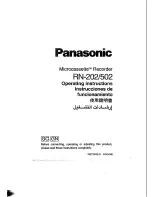
Analogue Solutions | FUSEBOX | Manual
Initial Tuning
Once the MIDI and audio connections have been made it may be necessary to tune
in the VCOs to the rest of your music set-up. Allow a five minute warm up time as these
are true analogue VCOs – that’s why they sound so great!
There are many controls on this synth that can affect one or all of the VCOs!
First set up the controls of Fusebox to make a simple sound.
Set Master Tune to the centre.
Ensure the Patternator pitch control is set to zero.
Ensure the Interval Generator is disabled.
Ensure the Arpeggiator is off.
Note, that patch leads plugged into the VCOs might also affect pitch.
Set VCO1 Octave to off.
Set Sync to off.
Set Xmod to off.
Set Low to off.
Set Free to off.
Turn VCO2 and VCO3 to zero volume so you can only hear VCO1.
Play, say, middle C on the keyboard. Using a digital keyboard as a reference, adjust
the tuning of VCO1 until it plays in tune with your reference.
Turn up VCO2 so both VCOs can be heard. Using the tune control of VCO2, tune it
to VCO1.
Finally, turn up VCO3 so all VCOs can be heard. You may prefer to turn down VCO2
at this point so you just hear VCOs 1 and 3. Using the tune control of VCO3, tune it to
VCO1.
This synth is truly analogue - and uses an old VCO circuit design to give it its great
sound. DON’T expect DCO or DSP style precision pitch.
The pitch will be in tune but have subtle shifts across the octaves due to their
vintage design. This is in part what adds to the character and warmth of the sound.
That’s the whole point!
Fusebox - 30 Oct 2017
| Page
!
13














































